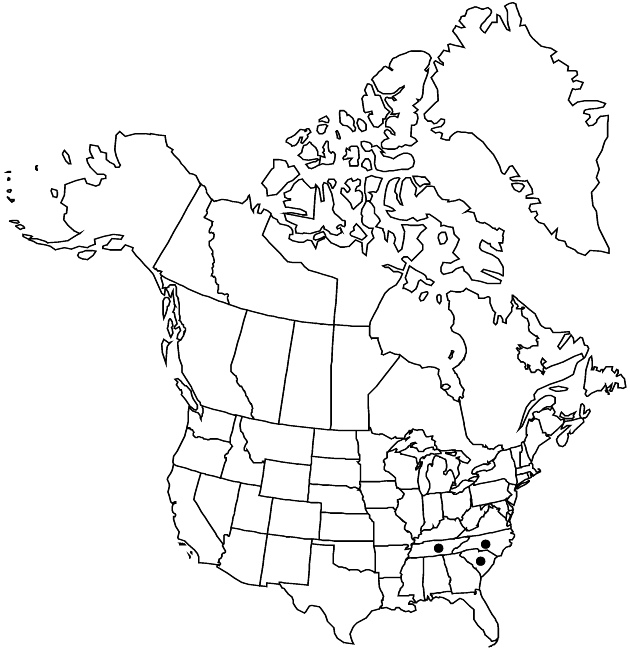Helianthus glaucophyllus
Brittonia 10: 192, fig. 1. 1958.
Perennials, 100–200+ cm (rhizomatous). Stems erect, glabrous (glaucous). Leaves mostly cauline; opposite (proximal) or alternate; petioles 1–3 cm; blades (light to dark green, abaxially whitish, 3-nerved), lanceolate to lance-ovate, 9–18 × 2.5–7 cm, bases abruptly narrowed, margins serrate, faces glabrous (abaxial) or sparsely scabrous (adaxial), not gland-dotted (abaxial glaucous). Heads 3–15+. Peduncles 0.5–8 cm. Involucres hemispheric, 8–9 mm diam. Phyllaries 12–15, lanceolate to ovate, 8–9 × 1.8–3 mm, (margins ciliate) apices acuminate. Paleae 6.2–7.5 mm, 3-toothed (apices hairy). Ray florets 5–8; laminae 12–14 mm (abaxial faces not gland-dotted). Disc florets 20–35; corollas 5–6 mm, lobes yellow; anthers dark, appendages dark. Cypselae 3.5–3.8 mm, glabrous; pappi of 2 aristate scales 3.2–3.5 mm. 2n = 34.
Phenology: Flowering late summer–fall.
Habitat: Mesic woodlands
Elevation: 700–1300 m
Distribution

N.C., S.C., Tenn.
Discussion
Helianthus glaucophyllus is found in the southern Blue Ridge Province. It is distinguished from H. microcephalus, with which it shares relatively small heads, by glabrous or sparsely scabrous, glaucous leaves. Its closest relative may be H. decapetalus, which has larger heads and, usually, longer phyllaries.
Selected References
None.